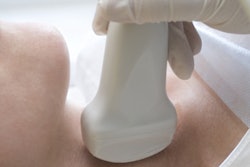In a happy ending worthy of an opera buffa, Italians are singing the praises of a vocal cord restoration technique that injects the body's own fat into damaged vocal cords to restore damaged voice quality.
The CT, MRI, and laryngoscopy results, presented at the 2006 European Congress of Radiology (ECR), show that vocal function not only improves after the procedure, but endures over follow-up periods of at least four years.
"Glottic incompetence can result from vocal cord paralysis, atrophy, or scarring," particularly from surgical procedures such as polyp removal, explained Dr. Laura Forzenigo from Milan's Ospedale Maggiore and the University of Milan in Italy. "Glottal augmentation is safe and simple, but commonly used materials such as silicone can cause body reactions. Even materials such as collagen can cause delayed reactions and fold stiffness due to fibrosis."
On the other hand, fat is the ideal implant: soft, easily available, and biocompatible. Autologous fat is even better -- it can be taken from the patient's own body and injected into the vocal cords without reaction, according to the researchers.
The group aimed to restore glottic competence after paralysis and soft-tissue defects, endoscopic vocal fold injection, or open surgery, and to find proof that the improvement lasted. Histological evaluation and imaging studies show contradictory results about survival rate of fat grafts. "Can CT and MRI demonstrate graft survival?" Forzenigo asked.
The prospective study sought to evaluate long-term survival of injected fat with CT and MRI in 14 patients (seven women and seven men, ages 18-74) with breathy dysphonia secondary to laryngeal hemiplegia in seven patients. The other seven patients had nonparalytic dysfunction, including three patients with a congenital malformation and two with vocal fold scarring -- one after polypectomy and one with vocal muscle atrophy.
All 14 patients underwent vocal cord lipoinjection and were evaluated with CT and MRI, 10-42 months postoperatively.
The fat was taken from the "lower abdomen using 4.0-mm cannula connected to a syringe," Forzenigo said. After three minutes in the centrifuge, it was drained and injected with a 1-mm syringe.
Noncontrast four-slice multidetector-row CT (MDCT) and 1.5-tesla MRI exams were performed before and after the procedure to determine the longevity of the injected fat. CT was performed with contiguous 2.5-mm transaxial slices. MRI was performed using spin-echo T1- and T2-weighted 1.5- to 4-mm thick transaxial and coronal MRI slices.
All patients underwent clinical evaluation with maximum phonation time (MPT) measurements; grade, roughness, breathiness, asthenia, strain (GRBAS) perceptual evaluations; and voice handicap index (VHI) self-assessments.
"Videolaryngoscopy demonstrated improvement in vocal competence in all cases," Forzenigo said. "The voice evaluation (also) demonstrated significant improvement of voice quality in all cases, with a reduction in breathiness," she said. "The maximum phonation time showed a higher efficiency of voice production," and the mean length of voiced vowels doubled postoperatively, she said.
Imaging of 10 of the 14 patients with CT and 12 of the 14 with MRI showed excellent correlation between the amount of cordal fat demonstrated by CT, MRI, and clinical evaluation, she said. "CT and MRI equally well demonstrated the persistence of fat grafts in all 10 patients examined (with both modalities), and in 12 patients examined with MRI "there was no change in graft size over time."
One patient had left focal fold paralysis with a gap between the vocal folds during phonation. Postprocedural follow-up 28 months later showed glottic competence during phonation. "MRI demonstrates the thickness of the left vocal fold after injection of fat (and) normal closure of the glottic fold," Forzenigo said.
Even after 42 months, CT and MRI showed "persistence of fat in the left vocal cord" in one patient with improved voice production that had also endured.
Lipoinjection is a valuable technique for voice rehabilitation in glottic incompetence, Forzenigo said. "The clinical and radiological results support the use of the autologous lipoinjection technique for vocal fold augmentation," she said. Moreover, imaging with both CT and MIR showed the fat cells survived transplantation into the vocal muscle for up to 42 months with good correlation between clinical outcome and imaging results.
The technique should improve singing as well as speech production, Forzenigo said in response to an audience question. And while both imaging techniques work equally well, the group prefers MRI for multiple postprocedural follow-up simply because it avoids ionizing radiation, she said.
By Eric Barnes
AuntMinnie.com staff writer
May 10, 2006
Related Reading
MDCT answers most head and neck questions, November 18, 2005
MDCT protocols weighed for cancers of larynx, hypopharynx, November 3, 2004
PET/CT shows restaging power for head and neck tumors, March 30, 2004
Chemoradiation study aims for 80% survival in laryngeal cancer, February 17, 2003
Copyright © 2006 AuntMinnie.com




















